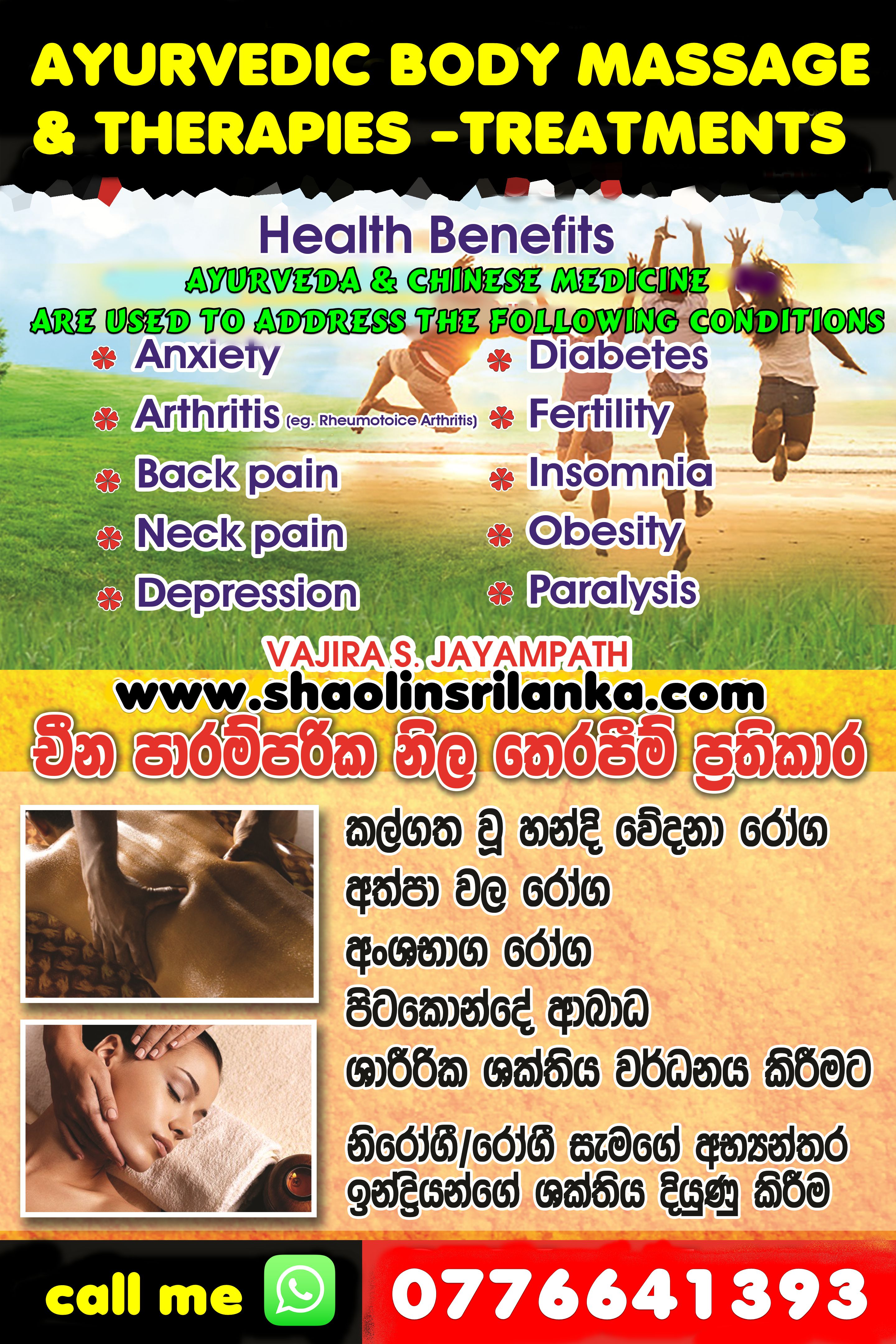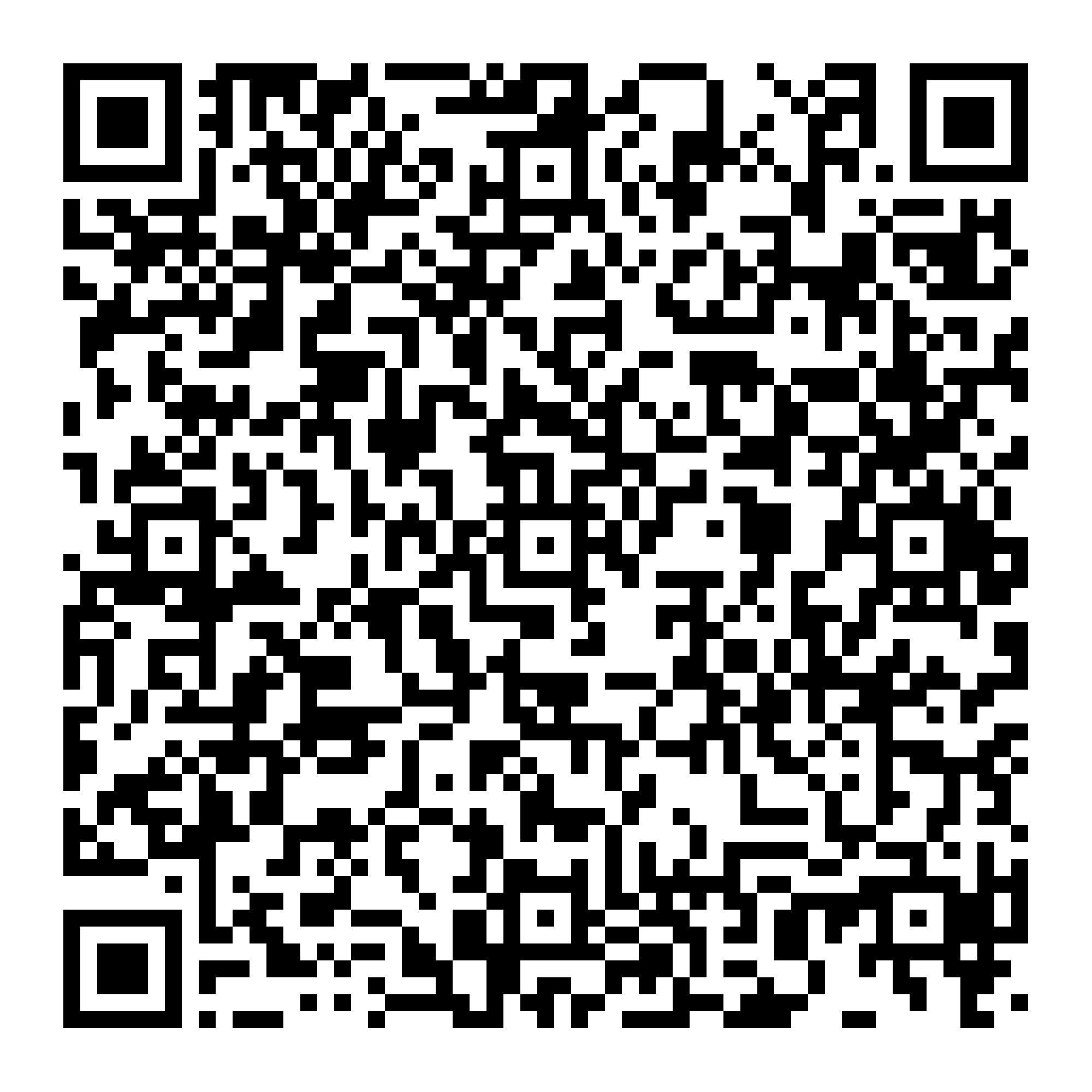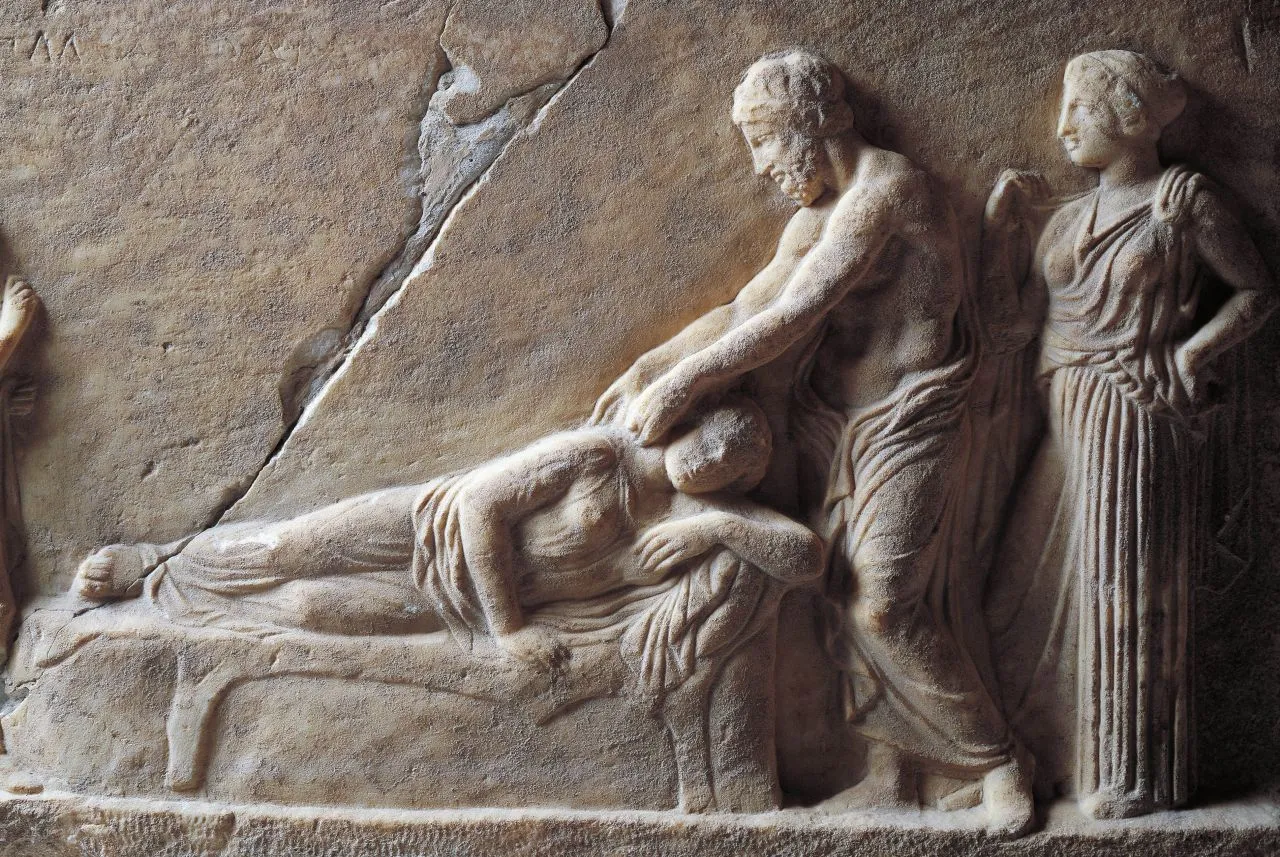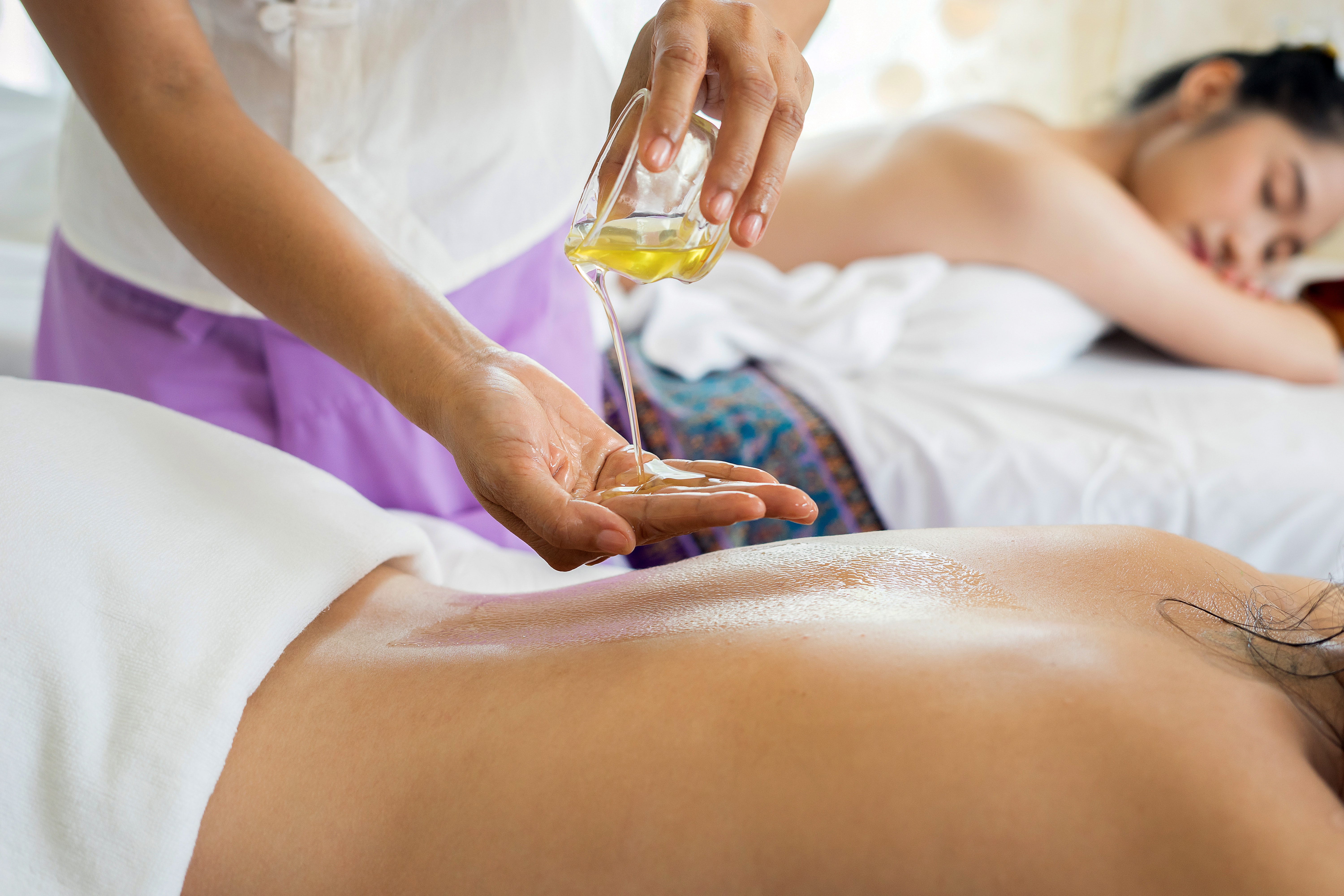

If the qr not giving any information : click here!
The term “Ayurveda” combines the Sanskrit words ayur (life) and veda (science or knowledge). Ayurvedic medicine, as practiced in India, is one of the oldest systems of medicine in the world. Many Ayurvedic practices predate written records and were handed down by word of mouth. Three ancient books known as the Great Trilogy were written in Sanskrit more than 2,000 years ago and are considered the main texts on Ayurvedic medicine-Caraka Samhita, Sushruta Samhita, and Astanga Hridaya.
Key concepts of Ayurvedic medicine include universal interconnectedness (among people, their health, and the universe), the body’s constitution (prakriti), and life forces (dosha), which are often compared to the biologic humors of the ancient Greek system. Using these concepts, Ayurvedic physicians prescribe individualized treatments, including compounds of herbs or proprietary ingredients, and diet, exercise, and lifestyle recommendations.
The majority of India’s population uses Ayurvedic medicine exclusively or combined with conventional Western medicine, and it’s practiced in varying forms in Southeast Asia.
Ayurvedic medicine (also called Ayurveda) is one of the world’s oldest medical systems. It originated in India more than 3,000 years ago and remains one of the country’s traditional health care systems. Its concepts about health and disease promote the use of herbal compounds, special diets, and other unique health practices. India’s government and other institutes throughout the world support clinical and laboratory research on Ayurvedic medicine, within the context of the Eastern belief system. But Ayurvedic medicine isn’t widely studied as part of conventional (Western) medicine. This fact sheet provides a general overview of Ayurvedic medicine and suggests sources for additional information.

Learn How Massage Therapy Has Evolved Over 5,000 Years The practice of using touch as a healing method derives from customs and techniques rooted in ancient history. Civilizations in the East and West found that natural healing and massage could heal injuries, relieve pain, and prevent and cure illnesses. What’s more, it helped reduce stress and produce deep relaxation.
Massage therapy began as a sacred system of natural healing. However, cultural shifts rendered it a disreputable form of indulgence for extensive periods of history. Enduring these turns, massage has experienced resurgence in modern times. Today, massage therapy stands as a highly respected holistic healing method practiced across the world. Here’s how massage has evolved into the relaxing and therapeutic practice it is today.
Massage therapy is a treatment approach which is growing in demand and popularity. It was once considered an alternative or fringe approach, but it is now becoming much more mainstream. More importantly, now that massage therapy is considered a mainstream treatment option, many insurance companies provide coverage for treatment sessions. This form of therapy involves hands-on techniques to increase circulation, relieve tension, reduce stress, relieve anxiety, improve sleep, and promote relaxation throughout the entire body, as well as many other benefits. The body’s soft tissue areas include the muscles, tendons, connective tissue, etc. If someone is tense and in need of a release, or they have been injured and have extensive muscle and/or nerve tissue damage that plagues their body, massage therapy might be worth exploring. Here are some benefits of massage therapy.
When the body is tense and under stress, it produces unhealthy levels of the well-known stress hormone, cortisol, which can contribute to weight gain, sleeplessness, digestive problems, and headaches. Massage therapy has been shown to decrease cortisol levels in the body. This enables the body to enter a recovery mode. Moreover, this form of therapy also triggers lasting feelings of relaxation, improved mood, and reduced stress levels.
Not only can massage therapy help with stress relief, but regular massage sessions over a prolonged period of time can boost energy levels, reduce pain, and stimulate individuals on physical as well as emotional levels.
Regular massage therapy sessions have been found to reduce blood pressure levels. In fact, some long-term studies have shown that a consistent massage program can reduce both systolic (upper number) and diastolic (lower number) blood pressure. Moreover, it can also reduce cortisol levels within the body. Furthermore, consistent massage sessions can also reduce trigger sources for anxiety, hostility, tension, and depression. In turn, lower blood pressure levels can also reduce the risk of heart attack, stroke, and/or kidney failure, as well as many other health issues.
The purpose of massage therapy is to target the source of the body’s pain via eliminating tense muscles, increasing flexibility, and providing relaxation to the affected muscles as well as the body as a whole. Massage also promotes circulation to the affected or injured muscles, which increases nutrients and oxygen to the damaged tissues. In turn, this increased activity to the affected sites reduces stiffness and edema (swelling) in the muscles and joints, as well as increases flexibility to help reduce pain. Moreover, this form of therapy also releases endorphins (pain-killing hormones), which boost the dopamine and serotonin levels in the body. These hormones assist the body in many ways–physically as well as emotionally. Case in point, they promote healing, pain management, and feelings of euphoria, as well as help to calm the nerves.
The long-term benefits of massage therapy are not to be underestimated. Improved circulation is part of a snowball effect that occurs in the body as a result of receiving regular massage therapy on a consistent basis. This is because proper circulation brings damaged, stiff, and tense muscles the rich blood supply they need to promote healing.
Moreover, massage also promotes improved circulation via the use of hands-on pressure, which moves the blood through the damaged and congested areas of the body. In turn, the release of this same pressure causes new blood to flow into tissues. Furthermore, the squeezing, twisting, and pulling action of the massage technique also removes lactic acid from the muscle tissues. As a result, this action improves the lymph fluid circulation, which carries metabolic waste products away from internal organs and muscles. In turn, this results in lower blood pressure levels and improved overall body function.
Many Americans experience back, neck, and muscle pain from a variety of sources. However, the primary cause of this pain results from poor posture. In fact, chronic back pain, which is the number one reason for missed work days and second most common cause of disability, is often the result of incorrect or poor posture while standing and/or sitting. Moreover, being overweight, poor posture, and repetitive or overuse movements can also contribute to the strain on the back and other potential problem areas. As a result, the added strain often causes spasms, pain, and tense muscles in the hips, glutes, back, neck, and legs.
Massage therapy can help get the body back into proper alignment. In fact, improving one’s posture can be one of the most beneficial and relaxing aspects of massage therapy. Massage allows the body to relax and loosen the muscles made tense and sore via bad posture. In turn, this allows the body to position itself in its organic and pain-free posture. As part of a consistent massage therapy program, the body’s muscles are loosened and relaxed. Moreover, the joints have greater freedom, flexibility, range of motion, and pressure points are relieved. As a result, the body is able to position itself in an organic and healthy posture. In short, massage therapy helps to correct the positions and movements developed over time as a reaction to pain.
It is a well-known fact that individuals who experience high levels of stress are more vulnerable to illness and injury. When stress is combined with sleep disturbances and poor nutrition, the impact is directed at the body’s immune system. Its ability to naturally protect itself against infections, pathogens, and bacteria is greatly reduced. Some might wonder how massage therapy benefits the immune system. Studies have indicated that regular massage sessions not only help reduce stress, but can also boost the immune system’s cytotoxic capacity (activity level of the body’s natural “killer cells”) and enhances the body’s ability to deliver nourishment. Moreover, massage therapy can be a great addition to any exercise program. Much like regular exercise can keep the body fine-tuned, regular massage therapy can help keep the immune system strong and resilient.
Once considered an alternative or fringe approach, massage therapy is now much more mainstream and growing in popularity. More importantly, now that massage therapy is considered a mainstream treatment option, many insurance companies provide coverage for treatment sessions. This form of therapy involves hands-on techniques to increase circulation, relieve tension, reduce stress, relieve anxiety, improve sleep, and promote relaxation throughout the entire body, as well as many other benefits.

Abhyanga or Abiyangam is an ayurvedic holistic healing massage therapy and not a conventional massage with innumerable health benefits. It is considered that there is no better expression of self-love anointing ourselves from head to toe with warm, Ayurvedic oil. This practice of full-body oil massage is known as Abhyanga. Similar to the experience of being loved, the practice nourishes the body, reinstates the balance of doshas and improves one’s well-being and longevity. There are many benefits to Abhyanga; some may even surprise you! Here's a list of 5 of our favourite and most surprising benefits from a continued and long-term Abhyanga practice.
Today, every other person on this planet is suffering from the problem of overweight or obesity. People shell huge chunks of money on treatments and medicines for shedding their excess fat, but end up being disappointed. Try making this Ayurvedic massage your ultimate partner in weight loss program and experience surprising results without any side effects. In Ayurveda, excess body weight is considered as body imbalance. The medicated oils in Abhyanga massage acts as fat burner, getting rid of all the impurities and toxins from your body.
The sensation of Abhyanga is deeply nourishing to your brain, nervous system, mind, soul, skin and joints. The massage rouses a feeling of being wrapped in loving arms. It emulates the warmth and makes a powerful difference in how you feel about yourself as well as about everything and everyone around you. It replaces your anxieties with a sense of calmness and contentment. The oils used in the Ayurvedic massage is heavy, stable, warm, calm, and grounding- all the qualities of sound sleep. The massage will help you fall asleep and stay asleep all night long.
Dreaming of lush, soft skin in spite of seasonal changes without any sensation of dryness and cracking? Abhyanga oil therapy creates a buffer between your skin and harsh environmental effects, maintaining skin soft and supple. You can notice your increased resistance to dryness, cracking, and even bruising, thanks to the hydration and lubrication of the skin using Abhyanga. The Ayurvedic full-body massage also strengthens the fragile skin and increases skin's natural vibrant beauty helping skin to adopt the ageing process more gracefully and reduce wrinkles.
Abhyanga stimulates blood circulation encouraging quick removal of metabolic wastes and providing instant relief to diseases and energy and stamina to last throughout the day. An unsung benefit of Abhyanga is its ability to stimulate and nourish internal organs. The massage helps in tuning up the functioning of the organs and optimises the body’s ability to flush out toxins. It also revitalises and energises the cells of the body. Take care of the most important thing you can: yourself. It is fascinating to note that Abhyanga has physical, emotional and psychological effects. Each one of us deserve to be cared for, nourished and loved. By making Abhyanga a practice, you are essentially thanking and taking care of yourself. It is important to prioritise your needs and this gives you the much needed "me time". The experience will give you a deep sense of warmth, stability, comfort and confidence.
The warm medicated oils used in Abhyanga deeply penetrate cells and release physical, mental and spiritual toxins from our body, hence detoxifying our body from head to toe, inside out. The oils, herbs and massage will be carefully chosen and customised to suit your body type and doshas, enabling you to precipitate the stored-up toxins and promoting self-healing of cells.
The history of essential oils significantly overlaps with the history of herbal medicine. Humans have always had some understanding of the idea that herbs could be useful for treating minor ailments and providing various life-enhancing benefits.
In fact, some ancient cultures believed that plants and herbs had magic properties and used them in religious rituals. Even the Greek philosopher Aristotle once theorized that plants had psyches.
Though essential oils have recently become popular again, the idea that essential oils provide a range of health benefits is nothing new. Indeed, essential oils have been used extensively throughout history, especially in traditional Chinese medicine (TCM).
Herbs have been an important part of TCM for more than 2,000 years. Indeed, the Yellow Emperor’s Classic of Internal Medicine, an ancient treatise on medicine, describes them extensively.
The treatise was supposedly written in 2,600 BCE, although most historians now believe that the author is a mythical figure and that the text is more modern, dating back to 300 BCE.
According to TCM, essential oils represent the “jing,” or essence, of the plant. The theory goes that essential oils contribute to spiritual, mental, and physical development because the jing of the plant resonates with the jing of the body.The theory also describes that essential oils are typically applied to mu-points, yuan-source points, and extraordinary channels or other meridians, where they can provide healing benefits.
In TCM, essential oil use help with placing an individual into one of five states :
Based on current research, the health benefits of essential oils come from secondary metabolites, including terpenes, found in the plants from which the essential oils are produced. In addition to being aromatic, essential oils provide a range of health benefits either because they bind with receptors in the body (such as the CB1 receptors) or because they provide antimicrobial, antibacterial, or anti-inflammatory effects.
The term tui na (pronounced "twee naw"), which literally means "pinch and pull," refers to a wide range of Traditional Chinese Medicine (TCM) therapeutic massage and body work. Tui na is not generally used for pleasure and relaxation, but rather as a treatment to address specific patterns of disharmony.
Tui na ([tʰwéi.nǎ]; Chinese: 推拿) is a form of Chinese manipulative therapy often used in conjunction with acupuncture, moxibustion, fire cupping, Chinese herbalism, t'ai chi, and qigong. Tui na is a hands-on body treatment that uses Chinese taoist principles in an effort to bring the eight principles of Traditional Chinese Medicine (TCM) into balance. The practitioner may brush, knead, roll, press, and rub the areas between each of the joints, known as the eight gates, to attempt to open the body's defensive chi (Wei Qi) and get the energy moving in the meridians and the muscles. Techniques may be gentle or quite firm. The name comes from two of the actions: tui means "to push" and na means "to lift and squeeze." Other strokes include shaking and tapotement. The practitioner can then use range of motion, traction, with the stimulation of acupressure points. These techniques are claimed to aid in the treatment of both acute and chronic musculoskeletal conditions, as well as many non-musculoskeletal conditions. As with many other traditional Chinese medical practices, there are different schools which vary in their approach to the discipline. It is related also to Japanese massage or anma
A type of massage that is becoming more and more popular for both practitioners and clients is Tui Na massage, or Tuina massage. Pronounced “twee-nah,” Tui Na massage is a modality of Traditional Chinese Medicine that addresses specific patterns of disharmony in the body. Here are five benefits of Tui Na massage people are discovering every day.
Tui Na, along with acupuncture and Chinese herbal medicine, are the main components of Traditional Chinese Medicine. As such, Tui Na can be used to treat specific areas, or it can be used to improve the overall Qi or energy flow throughout the body. Because Tui Na is a complete system, the treatment often helps both these components at the same time.
Acupuncture involves releasing and connecting energy at 12 specified points throughout the body through the use of tiny needles. Similarly, Tui Na, which means “pushing and grasping,” addresses the same points using manual stimulation. Tui Na rectifies anatomical abnormalities of both inner and outer surfaces by altering the energy levels of the biological system and adjusting the bio-information of the body.
Because it is a form of Traditional Chinese Medicine and because it employs the same principles, Tui Na can also be used as a complement to acupuncture treatment. Using both treatment modalities can be an effective approach to working with energy and addressing and restoring its flow.
Tui Na massage can relieve multiple disorders including insomnia, constipation, headaches, migraines, irritable bowel syndrome, premenstrual syndrome, and emotional problems. It can also treat disorders related to digestive, respiratory, and reproductive systems. Many people seek the treatment for stiff neck, distension of shoulders, sciatica, and sore back. Tui Na can be used to address both internal diseases and external injuries.
Tui Na can be used as an integrative treatment with traditional medicine. In addition, it can be used with other forms of alternative medicine, including Shiatsu massage, sports massage, deep-tissue neuromuscular bodywork, and my facial release.